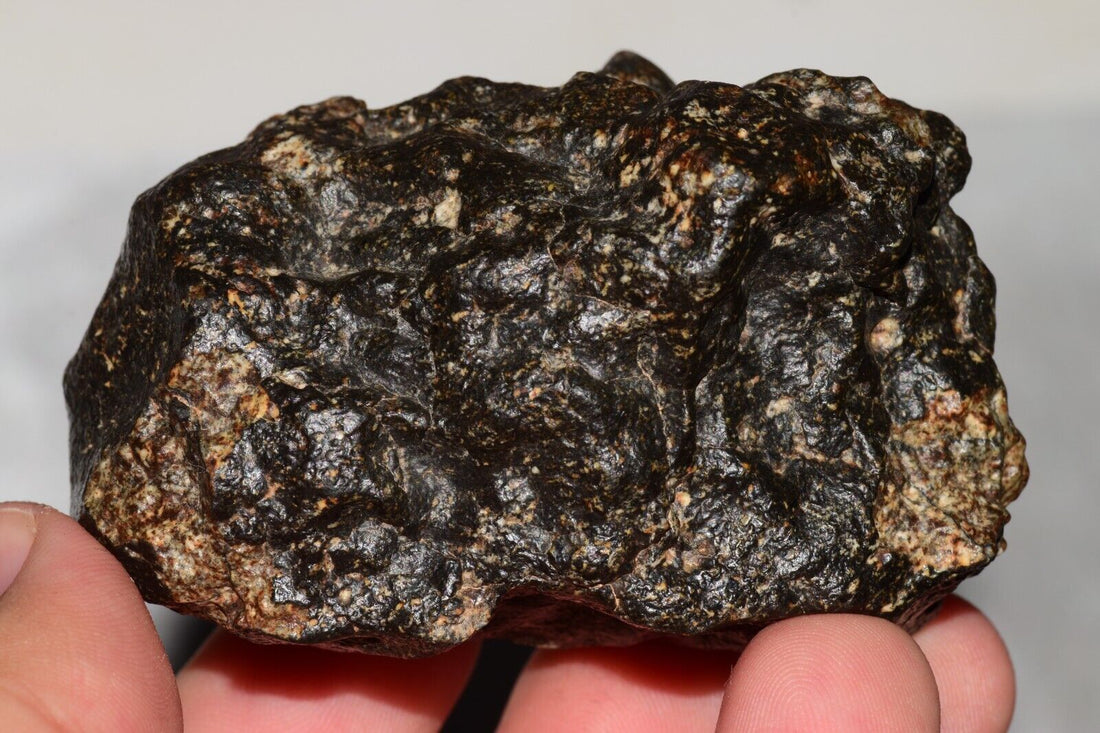
How to Identify a Meteorite: 7 Signs to Look For
Share
How to Identify a Meteorite: 7 Signs to Look For
Not every dark, heavy rock is a meteorite—but with some basic knowledge, you can learn to tell the difference between a true space rock and an ordinary Earth rock. This article will walk you through the key features to help identify a meteorite in the field or at home.
🪨 1. Fusion Crust: The Outer Shell
Most meteorites have a dark outer layer called a fusion crust. This crust forms when the rock heats up while entering Earth’s atmosphere. It looks like:
-
A thin black or dark brown layer
-
Sometimes shiny, sometimes matte
-
Smoother than the rest of the rock
If the rock has a burned appearance, it might be a meteorite!
🧲 2. Magnetic Properties
Meteorites often contain iron and nickel, which makes them attracted to magnets. Use a strong magnet to test:
-
If the rock sticks firmly, that’s a good sign.
-
If it only reacts weakly or not at all, it may not be a meteorite.
💪 3. Heavy for Its Size
Pick it up. Does it feel heavier than a typical rock of the same size?
-
Meteorites are dense due to their metal content.
-
If it feels “surprisingly heavy,” it’s worth further testing.
👣 4. Regmaglypts (Thumbprints)
Some meteorites show indentations on the surface, like shallow craters or thumbprints. These are called regmaglypts, and they form as the rock melts slightly during its flight.
-
Regmaglypts are usually visible on iron or stony-iron meteorites.
🔬 5. No Crystals or Quartz
Most Earth rocks contain crystals or quartz (shiny grains or veins). Meteorites usually don’t.
-
If you see sparkly bits or clear crystals, it’s probably not a meteorite.
-
Exception: some rare types like pallasites can have crystals but they look very different.
🛠️ 6. Interior Color
If you break a small piece or cut the rock (carefully), the interior of a meteorite usually looks:
-
Dark gray to black (stony meteorites)
-
Silvery with shiny metal flecks (iron or stony-iron meteorites)
🧪 7. The Streak Test (Optional)
Rub the rock gently on an unglazed ceramic tile:
-
Meteorites usually leave no streak or a very faint gray one.
-
If it leaves a colored streak (red, yellow, or white), it’s probably an Earth rock.
⚠️ Be Aware of Meteorwrongs
Many common Earth rocks can look like meteorites—slag, magnetite, hematite, and others. These are called meteorwrongs. They can fool even experienced hunters!
🧭 Best Practices
-
Don’t break a valuable sample—test gently first!
-
Label and photograph your find with its location and date.
-
Consider having your sample tested by a lab or expert.
🌌 Learn, Practice, and Improve
The more you study meteorites, the better you’ll become at spotting real ones. Visit museums, join meteorite groups, and read field guides.
You’re not just hunting for rocks—you’re discovering pieces of other worlds.
